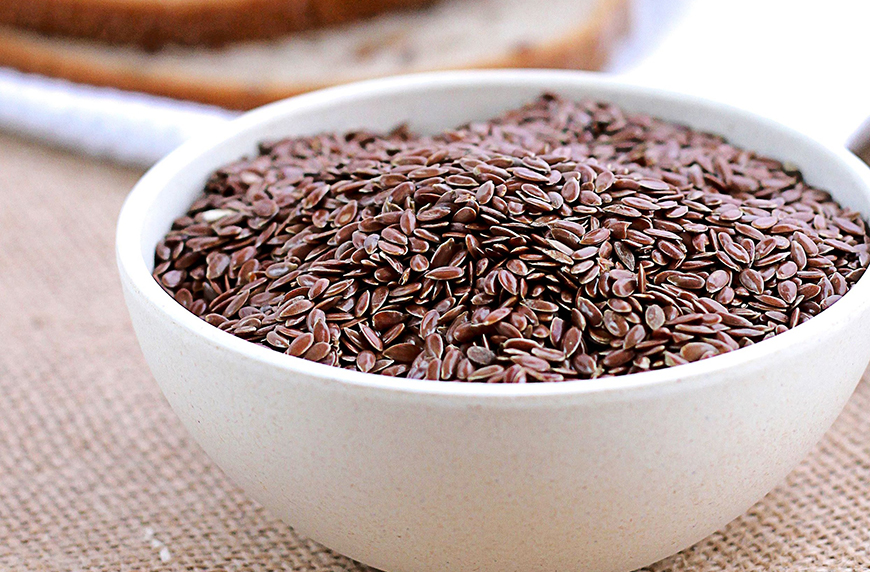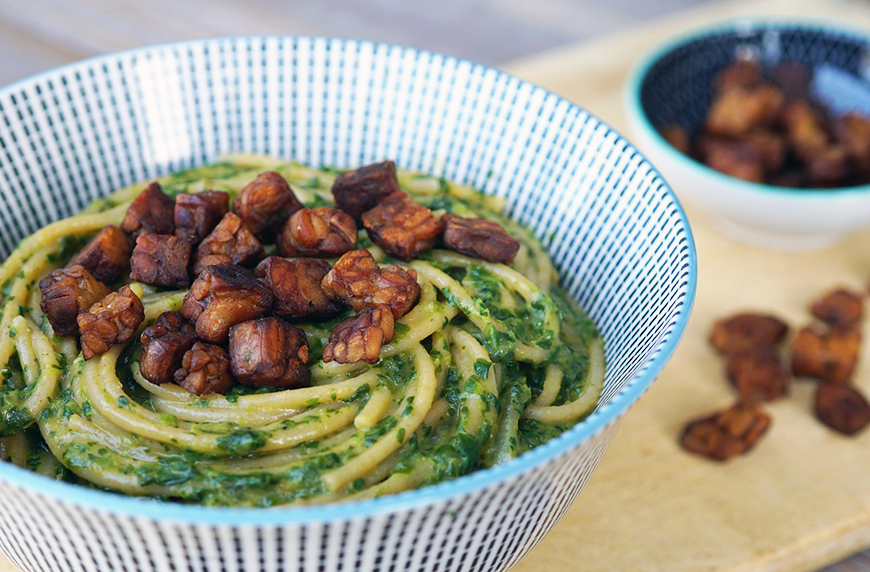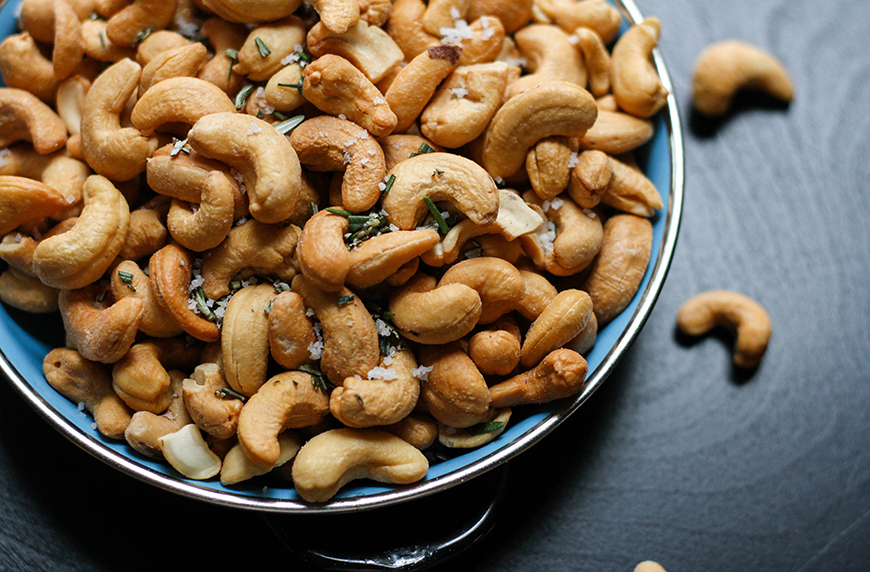Switching to a plant-based diet can be super intimidating. When you’re used to building your meals around animal products, it takes some time to retrain your brain to see vegetables and grains as the stars of the show—not just a side dish.
Instead of jumping in full-force, Nicole Centeno, French Culinary Institute-trained chef and founder and CEO of Splendid Spoon, recommends starting small with healthy swaps that can transform your meals with minimal effort. “Instead of saying ‘I want to be totally plant-based today,’ give yourself a goal for the ideal number of meals per week you want to eat plant-based, then break it down so you’re slowly getting to that goal, giving yourself time to find the swaps you love. It makes the process less daunting.”
To get you started, here are five swaps that prove plant foods beat out eggs, meat, and dairy any day.
1. Instead of Eggs, Use Ground Flaxseed

The next time you’re looking for an egg replacement for your recipe, grab some ground flaxseed. “I use it in baking. The flaxseed and water create a gel that makes them an amazing binder to replace eggs with. I especially love using them in buckwheat pancakes,” Centeno says. “You can replace one egg with one tablespoon of flaxseed and 1/2 tablespoon of water, or enough for it to become gelatinous.”
Why it’s healthy: Flaxseed is one of the richest dietary sources of omega-3 fatty acids. Because of that, it’s often recommended as a plant-based (and mercury-free!) alternative to fish. “The high omega-3 content allows flaxseed to be used to combat cardiovascular disease. It’s also been linked to health benefits like improved digestion and a reduced risk of heart disease, type 2 diabetes, and cancer,” says Emma Hulse, RD, nutrition expert at Splendid Spoon. “Flax seeds are also high in fiber, which improves digestion, relieves constipation, and helps you maintain a healthy weight.”
2. Instead of Meat, Use Tempeh

One of the best meat replacements around is none other than tempeh, which is made from fermented soybeans. “It grills nicely because of its firm texture,” Centeno says. “In the summertime, I love to slice it thick, brush it with coconut oil, and grill it, then put it on a potato bun with greens, kimchi mayo, and fresh tomatoes.”
Why it’s healthy: Aside from being high in protein, prebiotics, iron, calcium, and other important nutrients, the fermentation process tempeh goes through makes it easy for your body to digest. “Fermentation breaks down the nutrients found in soybeans, helping to improve digestion and absorption, while prebiotics promote the growth of beneficial bacteria in your digestive system,” Hulse explains. “Although studies have provided mixed results, some have linked prebiotic intake with increased stool frequency, reduced inflammation, and improved memory.”
3. Instead of Cheese, Use Seaweed

It might sound weird, but Centeno swears by seaweed’s cheese-replacing powers. “The key here is following cheese’s umami flavor into a different ingredient. Seaweed has it, and it’s super nutrient-dense with calcium, iron, and minerals like magnesium and iodine,” she says. “I love it toasted or crumbled on popcorn with sesame seeds, sesame oil, and sea salt.”
Why it’s healthy: Seaweed is nothing short of a superfood. “It contains a concentrated source of iodine and an amino acid called tyrosine. Your thyroid gland requires both to function properly,” Hulse says. In addition, it also contains a wide range of vitamins, minerals, and antioxidants—including calcium, iron, vitamins A, C, and E, and sometimes B12. “These antioxidants protect your body from cell damage, while seaweed consumption in general may reduce your risk of heart disease and diabetes by improving blood sugar control.” Thanks to the fiber and sugars it contains, it could also increase the amount of good bacteria in your gut.
4. Instead of Meat or Fish Stock, Use Collard Greens and Mushroom Broth

When it comes to creating a hearty broth, these veggies make a pretty dynamic duo. “Collards are rich in iron and mushrooms are rich in vitamin D, making this combo a no-brainer from a nutritional standpoint,” Centeno says. “They also bring the deep umami flavor and caramel color of meat broths. I use them as a base to risottos, stews, and soups, and also enjoy them as a sipping broth by adding in a little ginger and turmeric.”
Why it’s healthy: Upping the amount of vitamin D you’re getting is never a bad thing. And with mushrooms, you’re really getting your bang for your buck. “They’re a rich source of vitamin D2 that, when consumed, can increase and maintain blood levels of vitamin D in a healthy range. Ingestion of mushrooms may also provide the consumer with a source of vitamin D3 and vitamin D4,” Hulse says. “Some studies have demonstrated that adequate blood levels of vitamin D are linked to improved mood and boosted overall brain function.” In addition, vitamin D contributes to your bone health and even cancer prevention.
5. Instead of Dairy, Use Cashews

There’s no reason to be consuming dairy, which is known for being highly inflammatory. Especially when cashews—which can help fight off inflammation—make a great replacement in anything creamy, whether it’s soups and sauces or dressings. “I love a rich non-dairy cream to stir into purées,” Centeno says. “I purée 1 cup soaked cashews (drained) with 1/2 cup water. I love it stirred into butternut squash soup with a little rosemary oil.”
Why it’s healthy: Eating cashes to fight off inflammation is the tastiest medicine. “The high content of phenolic compounds in nuts might anticipate an anti-inflammatory effect of frequent nut consumption,” Hulse says. “Two servings of nuts a day is also helpful in fighting against cardiovascular disease, diabetes, and cancer by reducing blood pressure and cholesterol levels. Plus, the copper and iron in cashews work together to help the body form and use red blood cells. This keeps blood vessels, nerves, bones, and the immune system healthy and functioning properly.”
So, what are you waiting for? It’s time to get cookin’. You’ll be a plant-based pro in no time.

